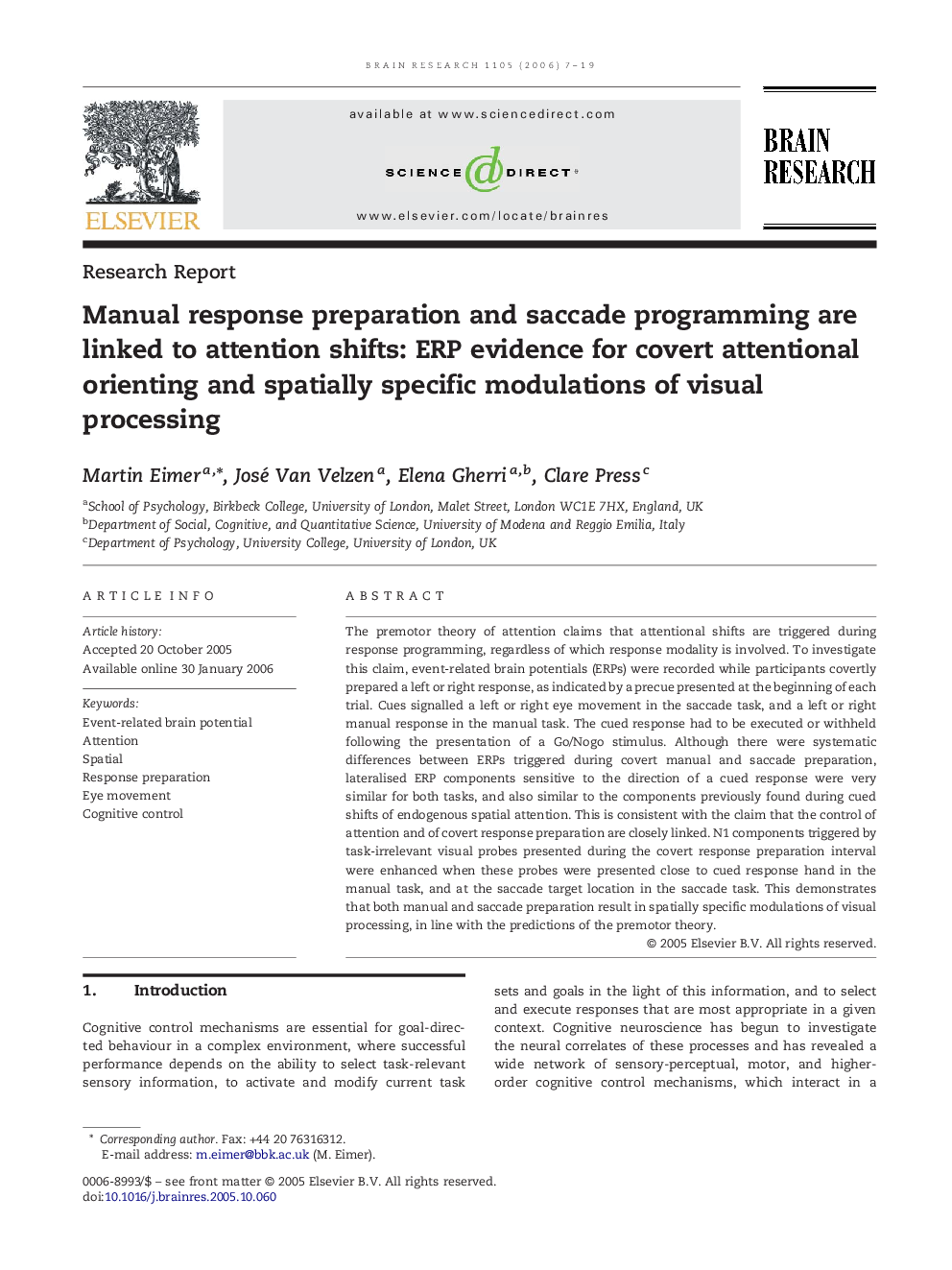| Article ID | Journal | Published Year | Pages | File Type |
|---|---|---|---|---|
| 4332427 | Brain Research | 2006 | 13 Pages |
Abstract
The premotor theory of attention claims that attentional shifts are triggered during response programming, regardless of which response modality is involved. To investigate this claim, event-related brain potentials (ERPs) were recorded while participants covertly prepared a left or right response, as indicated by a precue presented at the beginning of each trial. Cues signalled a left or right eye movement in the saccade task, and a left or right manual response in the manual task. The cued response had to be executed or withheld following the presentation of a Go/Nogo stimulus. Although there were systematic differences between ERPs triggered during covert manual and saccade preparation, lateralised ERP components sensitive to the direction of a cued response were very similar for both tasks, and also similar to the components previously found during cued shifts of endogenous spatial attention. This is consistent with the claim that the control of attention and of covert response preparation are closely linked. N1 components triggered by task-irrelevant visual probes presented during the covert response preparation interval were enhanced when these probes were presented close to cued response hand in the manual task, and at the saccade target location in the saccade task. This demonstrates that both manual and saccade preparation result in spatially specific modulations of visual processing, in line with the predictions of the premotor theory.
Keywords
Related Topics
Life Sciences
Neuroscience
Neuroscience (General)
Authors
Martin Eimer, José Van Velzen, Elena Gherri, Clare Press,
